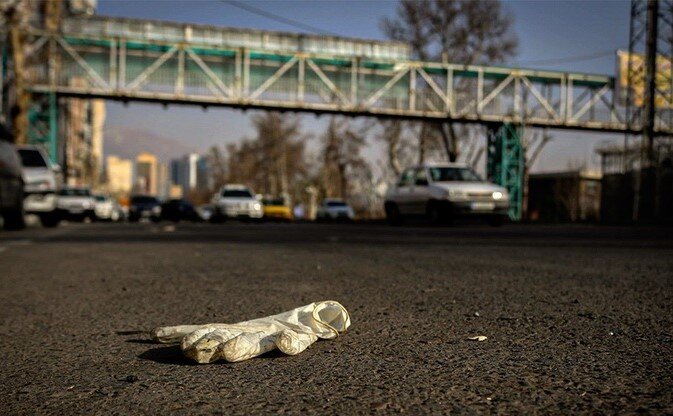Post-coronavirus crisis looming for the environment

TEHRAN – The rapid outbreak of the novel coronavirus, known as COVID-19, among countries around the world is not only a huge challenge for the public health, but the environment will also bear its dire consequences.
Coronaviruses are a large family of viruses. Some cause illness in people and others only infect animals. Very rarely have animal coronaviruses infected and spread between people. This is what’s suspected to have happened for the virus that has caused the outbreak of the current severe acute respiratory syndrome coronavirus 2, known as SARS-CoV-2. This is the virus that causes the coronavirus disease 2019, COVID-19, according to the Conversation website.
Worldwide, more than 93,000 people have been infected and at least 3,100 have died, predominantly in China, where the coronavirus originated in late December. However, the virus appears now to be spreading much more rapidly outside the Asian country, WHO reported.
Since Wednesday, with over 2,990 infections, deaths in Iran surged to 92.
The global spread of the new type of virus triggered demand for face masks, disposable gloves, and detergents.
Hazardous waste generation
Binge fear buying was clearly cited as people rushed to pharmacies to lay their hands on either N95 or a simple surgical face mask to protect themselves, the wave even reached medical gloves and detergents.
Many manufacturing companies has gone into overdrive to produce more such personal protection equipment; despite epidemiologists and infectious disease experts have been at pains to emphasize against a scramble for face masks in recent weeks.
However, people have not yet stopped panic buying face masks and other equipment to protect themselves from the fast-spreading coronavirus; with many negligently tossing their used face masks and gloves on the streets.
While an exact shelf life time period is dependent on what specific material the gloves are made of, a general rule is three years for disposable natural latex gloves and up to five years for disposable nitrile gloves.
That means more and more waste ends up in the landfills despite the environmental threat these kind of hazardous waste can cause both for the environment and people.
Antiseptics: double-edged swords
Detergents are the second choice for people to prevent novel coronavirus infection, and these days many consumers are rushing to get these items from stores and shopping malls.
Detergents with certain compounds can be harmful to health as much as they can relieve people of disease.
Excessive consumption of detergents is a risk factor for environment in addition to water and soil resources; wastewater from these substances enters our life cycle and can come up with a health hazard, Mohammad Khaleqi, head of Bojnourd department of environment told IRNA on Wednesday.
There is no doubt that the environment is affected by the excessive use of detergents, so people are expected to be careful not to damage nature when taking care of their health, he added.
Until recently, it was widely believed that antiseptics do not cause any harm, and do not affect human health or the environment. However, after conducting numerous studies and tests, some of their risks which can be caused by the excessive use of household antiseptics have emerged.
Some of these risks include affecting the environment, where it has become clear that some of the substances used in household antiseptics, especially aerosols, may contaminate the air. In addition, they are dangerous if applied to the skin continuously; though they eliminate harmful organisms, they also kill useful microorganisms located under the layers of the skin, which helps the cells to renew and wounds to heal.
Moreover, a recent American study has revealed a major surprise that might make using antiseptics a real public health hazard. The study revealed that they help creating advanced types of germs and bacteria that are difficult to eradicate, according to the Biblex website.
40% rise in water consumption
Following outbreak of the coronavirus in Iran, water consumption has climbed up due to hand washing and cleaning possessions, ISNA reported.
Furthermore, Norouz (Persian New Year) is approaching and every year during the same period water consumption rate increases because home cleaning is at its peak; but water consumption in Tehran raised by 14 percent, which is unusually high.
In normal conditions, however, average water consumption in Tehran is 2.5 times more than the global average, so the infectious disease has only made a bad situation worse.
Increasing consumption in the past few days has led to water pressure in some areas in Tehran and other provinces of the country as some of the cities faced cuts.
Kerman province’s Water and Wastewater Company announced that the outbreak of coronavirus has increased water consumption in Kerman city by 40 percent.
A 15 percent increase in water consumption in Ahvaz city is another report published by the news agencies in recent days.
Panic, not the way to survive
Given the climate change pressures, if the condition continues, environmental damages are likely to add insult to injury; and there can be a post-coronavirus crisis globally.
Governments needs to be more vigilant on waste disposal and defining strict rules on discarded medical equipment in the urban areas, fining the violators would come efficient in some cases.
Make people more aware of the time when they have to use face masks and other self-protection equipment.
People must also be more cautious in emergency situations, not to be easily effected by fear but to broad their vision to the future and act more sensible.
FB/MG
Leave a Comment